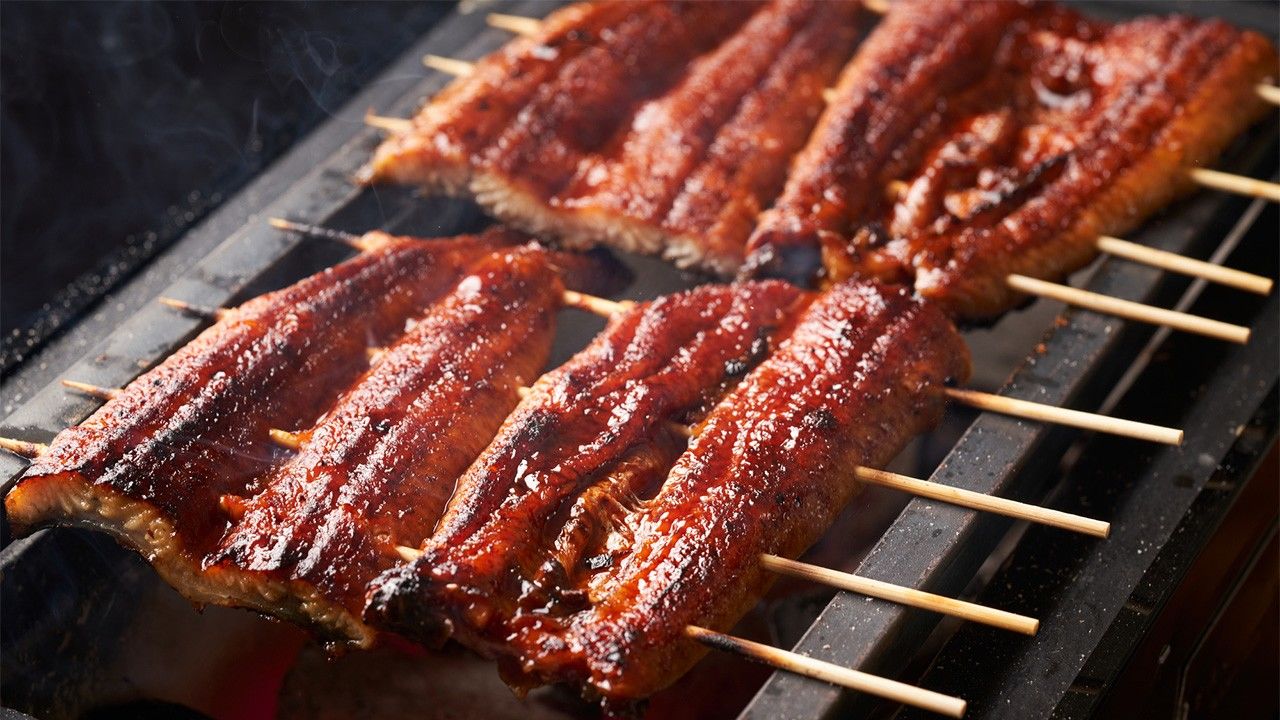
Eel Remains High-Priced Luxury in Japan Despite Some Recovery in Supply
Economy Food and Drink Environment- English
- 日本語
- 简体字
- 繁體字
- Français
- Español
- العربية
- Русский
The average market price for eel in Japan in May 2023 was ¥5,553 per kilogram, according to statistics based on Tokyo Metropolitan Central Wholesale Market’s monthly and annual reports. In 2022, the average annual price was ¥4,998 and had remained in that range of around ¥5,000 for the last five years. Since 2009 and 2010, when the price was roughly ¥2,300, it has been rising sharply, reaching the ¥4,000 to ¥5,000 range in 2012 and exceeding ¥5,000 in 2019.
Eel, known as unagi, is a quintessential ingredient and a mainstay of Japanese food culture. However, in the period 2009 through 2012, catches of juvenile glass eels in Japan fell drastically. Whereas previous catches reached 200,000 to 300,000 tons, the volume had dropped to less than 100,000 tons, so in February 2013, the Ministry of the Environment designated the Japanese eel as endangered (Class IB on its red list, meaning the eel is likely to become extinct in the future). In June 2014, the International Union for Conservation of Nature added the Japanese eel to its Red List of Threatened Species.
Since then, progress has been made in conserving resources in Japan, such as by introducing a permit system for eel farmers to limit breeding and reducing the volume of catches made of eels heading to spawning areas.
It is now 10 years since Japanese eels were classified as endangered. The supply of unagi, which had fallen to around 32,000 tons in 2013, has been gradually recovering, reaching more than 60,000 tons in 2021.
The graph above shows a breakdown of how the supply of eels has been changing in Japan over the last six decades. Currently, only around 60 tons are caught by fisheries. In 2021, 42,000 tons, or two-thirds of the total supply, was imported from countries like China and Taiwan, and 20,000 tons, or one-third, was produced through domestic aquaculture.
From the 1980s onward, Japan imported large quantities of unagi, peaking at 133,000 tons in 2000. Many were European eels that had been produced in China, but a drop in resources has meant a decline in Chinese eel farming. The introduction of trade restrictions also means it is no longer possible to increase supply in Japan by boosting imports.
The unagi produced using aquaculture are currently all glass eels that have been caught in the wild and then raised in captivity. The ecology of eels is still largely unknown and due to unagi being traded at high prices, it is possible that if not properly managed, resources will be depleted.
While research is being carried out in Japan to artificially hatch glass eels and raise them, there is no commercial outlook as yet.
(Translated from Japanese. Banner photo © Pixta.)


